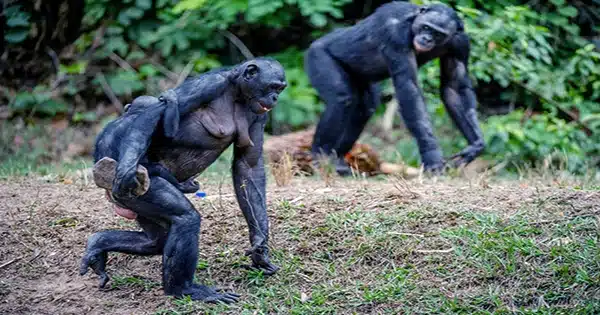Humans’ closest surviving cousins are apes such as chimps, gorillas, orangutans, and gibbons. We all have a common ancestor who lived between 23 million and 5 million years ago, during the Miocene epoch. While no remnants of this intriguing species have been discovered, what may it have looked like?
In other words, depending on the evidence, how big was our last common ancestor (LCA), and what did its skull, brain, legs, arms, and even fingers look like?
We don’t know everything. However, the nearest living relatives may be gorillas and chimps.
The size of the LCA is a significant mystery, according to Christopher Gilbert, a paleoanthropologist at Hunter College of the City University of New York. This is because ape fossils from the LCA’s time period are uncommon, according to a 2017 study published in the journal Nature.
The body sizes of early or “stem” apes range from small gibbon-sized species to larger primates approaching gorilla-size, making it difficult to pin down the LCA’s heft without a better understanding of these species’ evolutionary relationships and history, according to Gilbert, who co-authored the Nature study.
Walking or swinging from trees?
According to existing data, the LCA was most likely a four-legged animal. Fossils show that stem apes were capable of vertical climbing and suspensory behavior, similar to how modern humans may use their arms to hang from tree branches. Unlike all modern apes, which love to live hanging beneath or amid tree branches, at least some stem apes were not specialized for suspensory behavior, lacking adaptations such as long, highly curled fingers and toes, as well as highly flexible wrists, shoulder, and hip joints. According to Gilbert, this implies that the LCA was not also specialized for suspension.
Some experts have theorized “that maybe the LCA was a biped,” moving on two legs like a human, according to Thomas Cody Prang, a paleoanthropologist at Washington University in St. Louis. However, because “the LCA was a quadruped, like other primates,” it’s likely that it walked on all fours rather than two.
Head, shoulders, knees, and toes: Stem apes had a variety of head forms. Gilbert described some as having gibbon-like skulls and small faces, while others had longer faces resembling primitive apes and Old World monkeys like baboons (genus Papio) and macaques (genus Macaca). Nonetheless, “we know with near certainty that the LCA’s brain size was smaller than a human’s brain size,” Prang added. Because it was a quadruped, the head would have been positioned farther forward than a biped’s, similar to that of a gorilla or chimp.
Early apes’ arms and legs are frequently poorly preserved in the fossil record. Despite this, “the upper limbs of early hominins [humans and our close relatives and ancestors] appear to be large and heavily built, which is associated with forelimb-dominated locomotion — that is, climbing and suspension,” according to Prang. Early hominins appear to have possessed short hind limbs, resembling large apes such as gorillas (Gorilla gorilla and Gorilla beringei), chimps (Pan troglodytes), orangutans (genus Pongo), and bonobos (Pan paniscus) rather than humans, he added. In essence, early hominins appear to have been designed for tree canopies rather than the open savanna.
In terms of the hand, Prang and his colleagues examined Ardipithecus, a 4.4 million-year-old early fossil hominid, and discovered that its hand “was most similar to chimps and bonobos among all living humans, apes, and monkeys.” This may imply that the LCA had long, bent finger bones.
Humans, chimps, gorillas, and bonobos all walk with their heels touching the ground, implying that the LCA did as well, according to Prang.
This type of movement is also frequently associated with other characteristics seen in live African apes — gorillas, chimps, and bonobos — such as walking with knuckles and evolutionary adaptations to climb vertically. “All of the traits that we can reasonably study suggest that the earliest hominins, and therefore probably the LCA, were characterized by these same components of this adaptive package,” Prang said. “The LCA was neither a gorilla nor a chimp, but it was most likely related to gorillas and chimps of all known primates.”
Overall, the appearance of the LCA “is still quite contentious,” according to Gilbert. New fossil finds will be required to complete the picture.
















